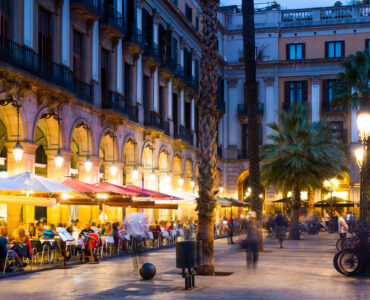Happy New Year! At least it is for the some people. In 2023, the Jewish New Year falls at sundown on Friday September 15 and ends at sundown on Sunday September 17. Why does the holiday start in the evening you may ask? The Jewish calendar is based on the Lunar calendar, as opposed to most of the world that lives by the Gregorian calendar. So dates start at sundown and end at sundown. The other difference of the Lunar calendar is the number of days in a year. The Lunar calendar has 354 days while the Gregorian calendar has 365 days.
The Leap Year in the Jewish calendar
Another special feature of the Jewish calendar is the leap year which occurs every four years. The leap year is accomplished by inserting an extra month into the year (13 months instead of 12). The reason for the leap year is to synchronize the Jewish calendar with the Gregorian calendar. The Jewish holiday of Passover is referred to in the Bible as the Holiday of Spring. Had there not been a leap year, Passover would fall in all four seasons.
Another religion which uses the Lunar calendar is Islam. But they do not have a leap year. As a result, the holy month of Ramadan moves by roughly 30 days each year. So it falls in all four seasons.
The Significance of the Jewish New Year
In Jewish scripture, the new year is the day of reckoning in which all people and nations are judged and sentenced. And that whatever happens to people and nations during the following year are the result of the verdict handed out on the New Year. Since Jewish scripture is based on the concept of divine providence, it is believed that the Almighty hands out the verdict to each person on an individual basis.
To prepare for the judgement, an entire month (the month of Elul) is set aside for repentance and self-improvement. Additionally, a period of 10 days starting from the New Year until the Day of Atonement (Yom Kippur) are referred to as the Days of Repentance (Aseret Yemay Tshuva).
Owing to the religious significance of the Jewish New Year, the customary blessing one bestows on his fellow person is Shana Tova. Which means (have a) Good Year. This is opposed to the greeting of Happy New Year which is typical in the USA.
Customs of the Jewish New Year
Apple in honey (Tapuach Be’dvash). To signify our wish to have a successful year, it is customary to eat an apple slice dipped in honey. This symbolizes a sweet year in which everything will go the way we want it to. Honey plays a key role in the family feasts throughout the holiday season, as it is also customary to dip the bread (referred to as chala) in honey.
Customary foods on the first night. Besides the apple in honey, there are a number of other foods which are present at the dinner table on the first night of Rosh Hashana which symbolize the wished for a successful year. Some examples:
- The head of a fish or a lamb. The symbolism is that we should be at the head end of everything and not at the tail end.
- Pomegranates. The editable part of this fruit is in the form of hundreds of seeds. The symbolism is that we should go into the year with many good deeds and acts of kindness. Which in turn will guarantee a good year.
- Beets. In Hebrew, the word for beet is Selek. Which is the root of the word expulsion. The symbolism is that we should expel the enemies and demons in our lives.
- Carrots. In Hebrew, the word for carrots is Gezer. Which is the root of the word verdict. The symbolism is that we should all have a good verdict in the New Year reckoning.
- Tzimmes. This is a traditional stew typically made from carrots and dried fruits such as prunes or raisins. This dish is prevalent in the homes of European (Ashkenazi) Jews.

- Gefilte Fish. Another staple in the homes of European Jews. This is typically made from carp and is served with Chrain, which is a combination of beets and horseradish.

Shofar. The Shofar is blown during the morning service on both days of the New Years holiday. The Shofar is a ram’s horn which is hollowed out and polished on the outside. It is blown like a trumpet and can make a fairly loud noise. The significance of the Shofar is to remind the Almighty of the biblical story of the Binding of Isaac and the sacrificial lamb, and thus better the judgement of the Jews. Abraham was about to sacrifice his beloved son as a test of his to devotion to the Almighty. At the last second, an angel called out for Abraham to cease the sacrifice. Instead, Abraham sacrificed a ram which got stuck in nearby foliage. It is believed that blowing the Shofar will sway the Almighty upon showing how devoted to him was Abraham, the forefather of the Jewish people.
Tashlich. A symbolic activity conducted on the first day of Rosh Hashana. Jews go to a lake or the beach and throw pieces of bread into the water. This symbolizes the casting of our sins away in order to start the spiritual healing process which is the main objective of the high holy days.
In Summary
Rosh Hashana is serious business to many Jews. If you have Jewish friends, they may be touched by your reaching out and offering the traditional blessing. Shana Tova!





